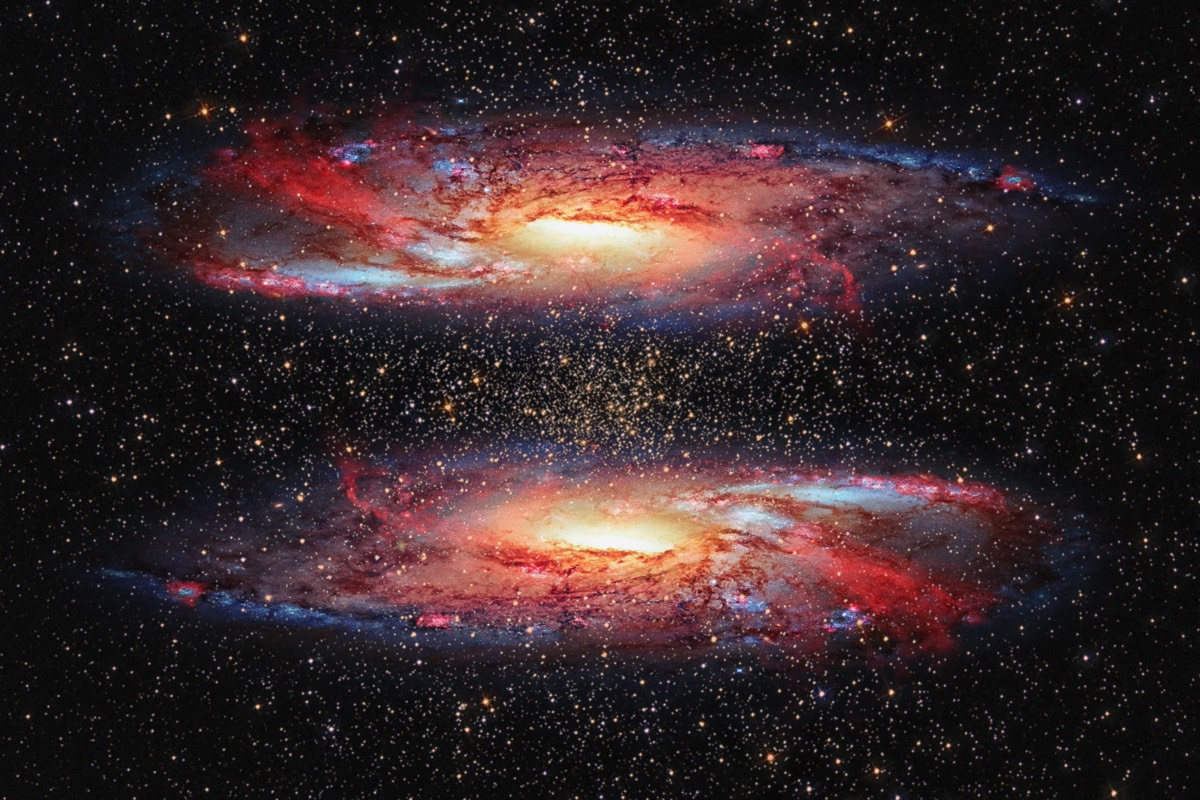
Parallel Universes
The vastness of space holds not only countless stars and galaxies, but also the tantalizing possibility of unseen realities – parallel universes. These hypothetical realms exist outside our own, unseen and perhaps even unseeable, yet brimming with the potential to rewrite our understanding of the cosmos. Let's delve into the theoretical labyrinth of parallel universes, exploring the scientific ideas that fuel them and the philosophical questions they ignite.
Many Worlds Interpretation of Quantum Mechanics
One of the leading contenders for the existence of parallel universes comes from the enigmatic world of quantum mechanics. This branch of physics governs the behavior of matter at the atomic and subatomic level, a realm where things get strange. The Many Worlds Interpretation of quantum mechanics suggests that every time a quantum possibility exists (like a coin spinning in the air before landing), the universe splits into countless realities, one for each potential outcome. In this view, our universe is just one branch on a vast, ever-splitting multiverse.
String Theory and Higher Dimensions
String theory, a theoretical framework that attempts to unify the fundamental forces of nature, proposes the existence of extra dimensions beyond the familiar three dimensions of space (length, width, height) and one dimension of time. These extra dimensions, though currently curled up too small for us to perceive directly, could potentially harbor parallel universes. Imagine our universe existing as a brane (a higher-dimensional membrane) vibrating within a higher-dimensional space, with other branes representing entirely separate universes.
Cosmic Inflation and Eternal Inflation
The theory of cosmic inflation suggests that the universe underwent a period of hyper-rapid expansion in its earliest moments. Some models of inflation propose that this inflationary phase might not have stopped uniformly throughout the cosmos. In these models, regions of the universe might continue to inflate forever, creating an infinitely vast and eternally inflating multiverse, with our universe being just a tiny bubble within it.
Echoes of Other Universes
The quest for evidence of parallel universes is an ongoing scientific pursuit. Some scientists have explored the possibility that the faint microwave radiation left over from the Big Bang (cosmic microwave background radiation) might contain subtle imprints or echoes from the collision of our universe with another in the multiverse. While no conclusive evidence has been found yet, the search continues.
Beyond the Observable Universe
The vastness of our observable universe, with its billions of galaxies, is mind-boggling. However, it's only a tiny fraction of the entire cosmos. The possibility exists that beyond the observable horizon lies a multiverse teeming with parallel universes, each with its own unique laws of physics and forms of life.
Philosophical Implications
The concept of parallel universes raises profound philosophical questions. Does free will exist if every possible choice creates a new universe? What is the nature of existence if our universe is just one among many? These are questions that science may never definitively answer, but they push us to contemplate the grand scale of existence and the mysteries that lie beyond our current understanding.
A Universe of Possibilities
While the existence of parallel universes remains unproven, their theoretical possibility opens doors to a universe brimming with possibilities. They challenge us to think beyond the confines of our own reality and contemplate the vast tapestry of existence that might lie unseen. The search for evidence and a deeper understanding continues, driven by our insatiable curiosity about the cosmos and our place within it.
